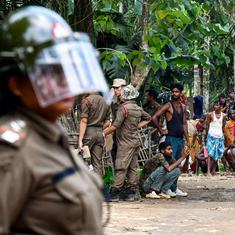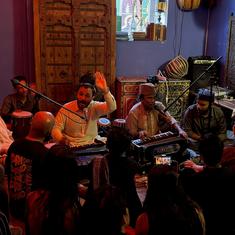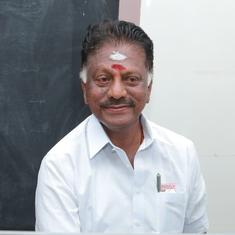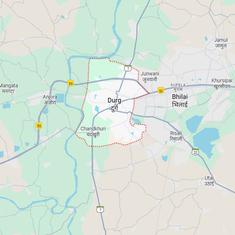On July 16, the chief electoral officer of Bihar drew up a list of nearly 1.49 crore voters who had not yet submitted enumeration forms for the special intensive revision of the electoral roll.
This list, which showed the number of voters yet to fill the forms in each constituency, was shared with political parties in Bihar on July 20. Party workers told Scroll they used it to track down some of these voters to help them submit their forms before July 25 – those who failed to meet this deadline will not make it to the draft voter list to be put out on August 1.
On July 27, a day after the deadline for submitting the forms had lapsed, the Election Commission of India announced that 65 lakh voters in Bihar – 8.3% of the electorate – had not submitted their enumeration forms.
The poll body did not release the details of these electors or their constituency-wise break-up.
But the July 16 data could be indicative of broader trends of inclusion and exclusion in the first draft voter list that will be put out on August 1.
A Scroll analysis of this list shows that six of the 10 Bihar districts with the biggest share of Muslim population also have the highest number of pending enumeration forms.
This includes all four districts in the Seemanchal region – Araria, Kishanganj, Purnia and Katihar – as well as Sitamarhi and East Champaran districts.
Opposition parties as well as civil society organisations have warned that the revision of the rolls could potentially disenfranchise lakhs of citizens, especially those from marginalised Dalit and Muslim groups. The granular data in the list of 1.49 crore names lends credence to those fears.
Dipankar Bhattacharya, the general secretary of the Communist Party of India (Marxist–Leninist) Liberation, told Scroll the Election Commission data confirms the Opposition’s warnings.
“We have always said that some categories of voters are particularly vulnerable [in the special intensive revision] – migrant workers, Muslims, especially among the rural poor,” said Bhattacharya. “There could be mass disenfranchisement along these lines, a continuum from Assam to Bihar.”
Scroll asked Election Commission officials to comment on the Muslim-dominant districts lagging behind. The story will be updated if they respond.
The list – and a discrepancy
With months to go for the Assembly election in Bihar, the poll body is drawing up a voter roll from scratch, in a massive exercise that demands that voters in the state fill enumeration forms and provide documentary evidence of their citizenship.
As a first step, the Election Commission distributed pre-filled enumeration forms to 7.89 crore voters in Bihar whose names appeared in the voter list as it existed on June 24, 2025.
Initially, the commission announced that between June 25 and July 26, its booth-level officers, or BLOs, would distribute these forms to voters and collect them once they had been filled, along with their documents proving citizenship.
In the first week of July, the poll body changed track and said that voters could submit their forms without the documents.
In a press release on July 16, the Election Commission said that to “re-verify” the voters who have not been found at their addresses even after three BLO visits, their information would be shared with district presidents of political parties from July 17 onward.
This would help since the “exact status of such electors can be confirmed” by the political parties before July 25, it added.
On July 18, the poll body said that the shared list would include voters “who are probably deceased, permanently shifted, have enrolled at multiple places or have not returned the EFs [enumeration forms] even after multiple visits of BLOs”.
In the following week, the chief electoral officer in Bihar uploaded the Assembly constituency-wise list of voters whose enumeration forms were pending as of July 16.
The list classifies voters based on their polling stations and mentions their name, unique voter ID number – also called EPIC – the name of their relative, their relation, and whether the relative was in the state’s 2003 voter list.
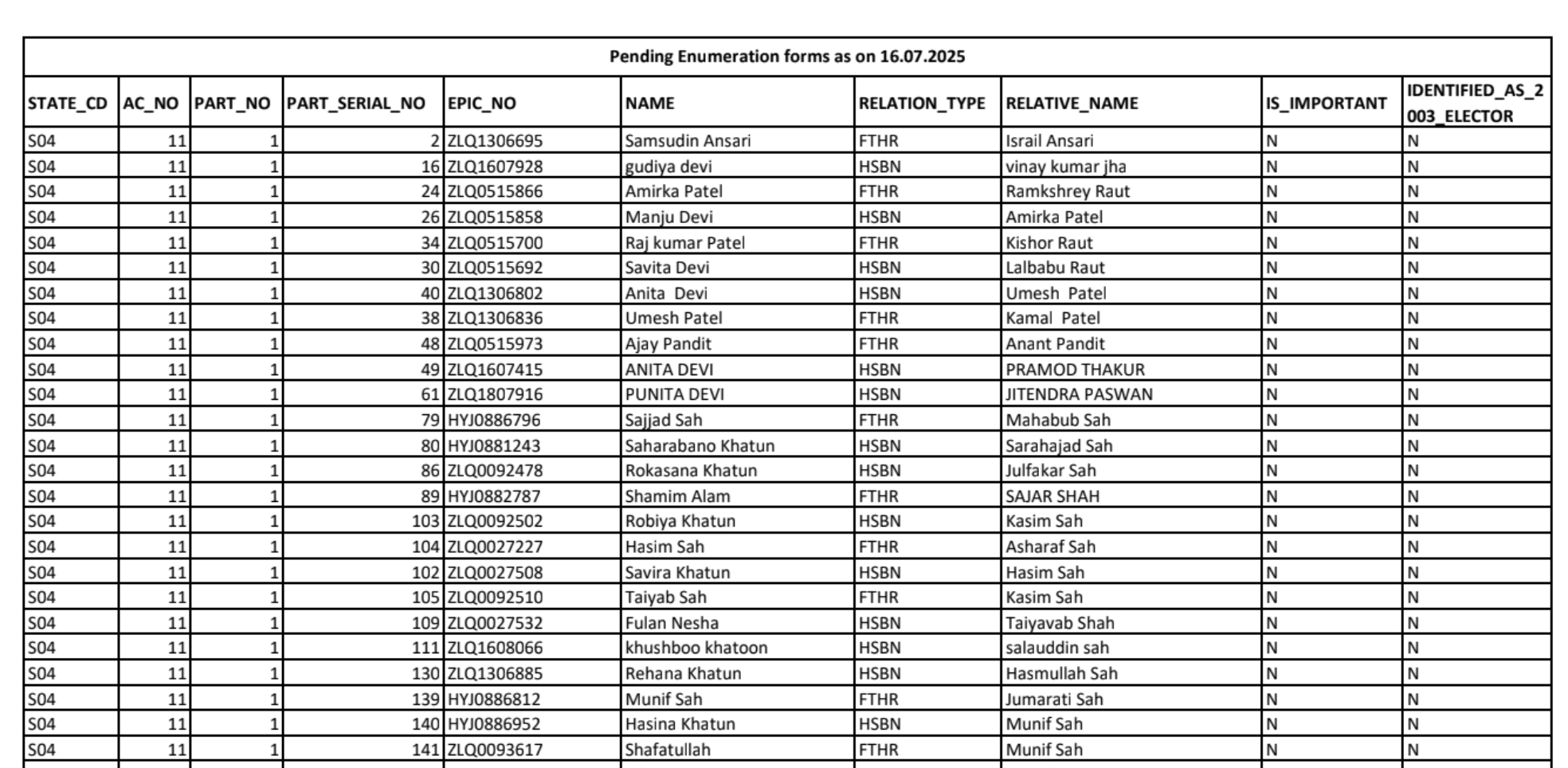
Scroll went through this list and found that it contained names of 1.49 crore voters – nearly 19% of Bihar’s electorate.
This figure exceeded Election Commission’s official tally of pending enumeration forms by nearly 60 lakh.
According to a press release issued on July 16, the Election Commission’s official figure was 84 lakh – 12.6 lakh had probably died, 17.4 lakh had probably permanently shifted, and 54.1 lakh had not returned their forms.
In addition, 5.8 lakh voters had enrolled at multiple places, the commission said.
Asked to comment on this discrepancy, an Election Commission official said that he was verifying the data with the Bihar CEO. Scroll had not received a response at the time of publishing.
What the data shows
The data shared by the Bihar CEO shows that districts with the highest number of pending submissions tend to have some of the highest population of Muslim residents.
The northeastern districts of Araria, Kishanganj, Purnia and Katihar have the highest percentage of Muslims, according to the 2011 census. All four are in the top ten list of highest pending submissions.
Other districts like Sitamarhi and East Champaran in North Bihar also follow this trend.
The district with the highest number of pending enumeration forms, as on July 16, is Purnia. Over six lakh voters or 28% of the district’s electorate is yet to submit the forms. Muslims make up 39% of the district’s population.
It is followed by Sitamarhi district where 27% of the electorate has not submitted forms. 22% of Sitamarhi’s population is Muslim.
There are exceptions too. Lakhisarai district in central Bihar has only 4% Muslim population. But at 20%, it made it to the list of top 10 districts where most voters had not submitted forms.
Conversely, five out of the 10 districts with the lowest number of pending enumeration forms have the smallest share of Muslim population in the state.
This includes Jehanabad, Sheikhpura, Munger, Arawal and Vaishali districts.
At 13%, Khagaria district in central Bihar has the lowest percentage of voters with pending submissions in the state, as of July 16.
When arranged by Assembly constituencies, the data shows nearly a third of the electorate in the Sasaram seat in Rohtas district had not submitted their forms by July 16 – the highest across Bihar. In absolute numbers, this came to 1.24 lakh voters.
A third of the electorate (33%) was also lagging behind in the Purnia constituency in terms of submission of enumeration forms.
Two other constituencies in Purnia district – Dhamdaha and Amour – had a pendency of 32% and 31% respectively.
Similarly, three seats in Sitamarhi district – Sursand, Riga and Belsand – also made it to the top ten.
With only 7% of the electorate yet to submit forms, Mahua and Raja Pakar constituencies in Vaishali district put up the best performance. They were followed by Vaishali at 8%.
Curiously, Cheria Bariarpur in Begusarai district had a pendency of just 8% of its electorate, even though the Begusarai seat had one of the highest pendency levels in the state – 33%.
Three seats from Patna district – Mokama, Bakhtiarpur and Barh – were in the top ten Assembly seats with the lowest pendency.
How parties used the list
Political party functionaries in Bihar told Scroll that the Election Commission’s July 16 list helped them increase form submission among voters.
Aditya Narayan Jha, the district president of the Bharatiya Janata Party in Araria district, said that the party’s core voter base did not have many complaints about form submissions. “The list was useful for us to find voters who had been left behind,” he said. “Those who could not submit forms are either Nepali brides who are living in Bihar or those who have migrated here from Bengal.”
Faizul Rahman Faiz, the Rashtriya Janata Dal’s special intensive revision-in-charge in Kishanganj district, said that his team used the list to build pressure on BLOs to collect and upload more forms.
“We have tried to get as many people as possible to submit their forms. The BLOs have cooperated and so have the DEOs [district election officers],” said Faiz. “But the process has still left many voters out.”
The reason for this exclusion, Faiz added, was not a bureaucratic problem but a logistical one. “Many forms could not be uploaded before the deadline because of poor internet connectivity.”
In Sheohar district, Rashtriya Janata Dal district chief Upendra Paswan shared the Election Commission list with booth-level agents of the party to track down voters named in it.
Faiz and Paswan said that voters who have not been able to fill the forms mainly belong to two categories: those who have voter IDs but did not get the forms as they are not on previous voter lists, and those who have migrated outside and have no contact with their BLOs.
The migrant workers in the lists who have been the hardest to track down, said Kumar Parvez, a central committee member of the Communist Party of India (Marxist-Leninist) Liberation. “We got this list on July 20. After that day, the Election Commission website stopped accepting online submissions of enumeration forms,” he alleged. “The migrant workers who tried to fill the forms got a message saying that they should contact their BLO. How will they do that?”
In Sheohar, Paswan faced the same issue. His colleagues tracked down as many migrant workers as they could and made them fill their forms and share it with the BLOs on WhatsApp – a valid channel for the Election Commission according to an affidavit it filed in the Supreme Court on July 21.
Faiz added that the district election officer in Kishanganj has assured those who were not able to submit their forms that they could apply to be included in the voter list after August 1. “That’s when the real battle begins,” he said. “When the election officials will demand citizenship proof.”


